I have a dataframe df
df = pd.DataFrame(np.arange(20).reshape(10, -1),
[['a', 'a', 'a', 'a', 'b', 'b', 'b', 'c', 'c', 'd'],
['a', 'b', 'c', 'd', 'e', 'f', 'g', 'h', 'i', 'j']],
['X', 'Y'])
How do I get the first and last rows, grouped by the first level of the index?
I tried
df.groupby(level=0).agg(['first', 'last']).stack()
and got
X Y
a first 0 1
last 6 7
b first 8 9
last 12 13
c first 14 15
last 16 17
d first 18 19
last 18 19
This is so close to what I want. How can I preserve the level 1 index and get this instead:
X Y
a a 0 1
d 6 7
b e 8 9
g 12 13
c h 14 15
i 16 17
d j 18 19
j 18 19


